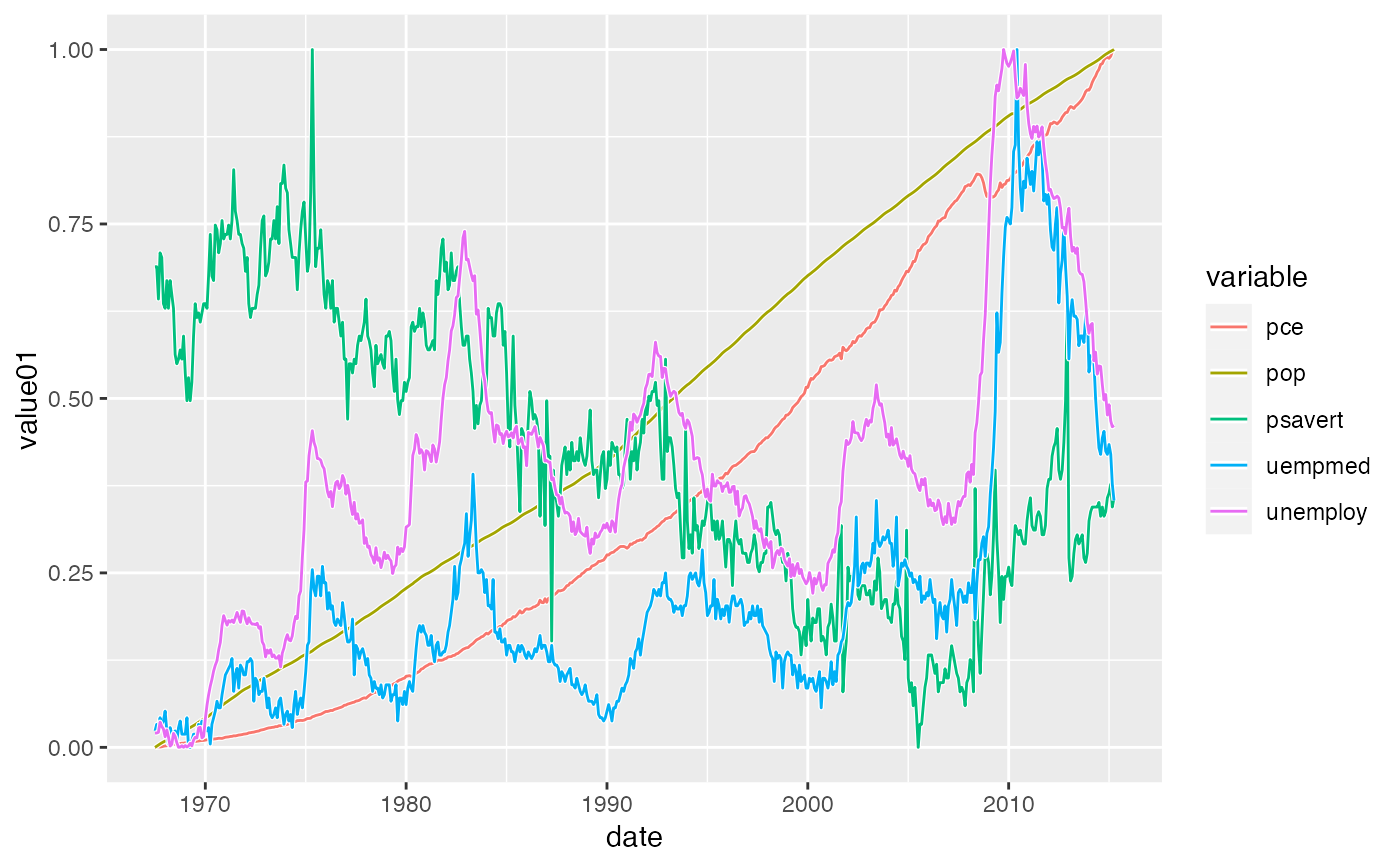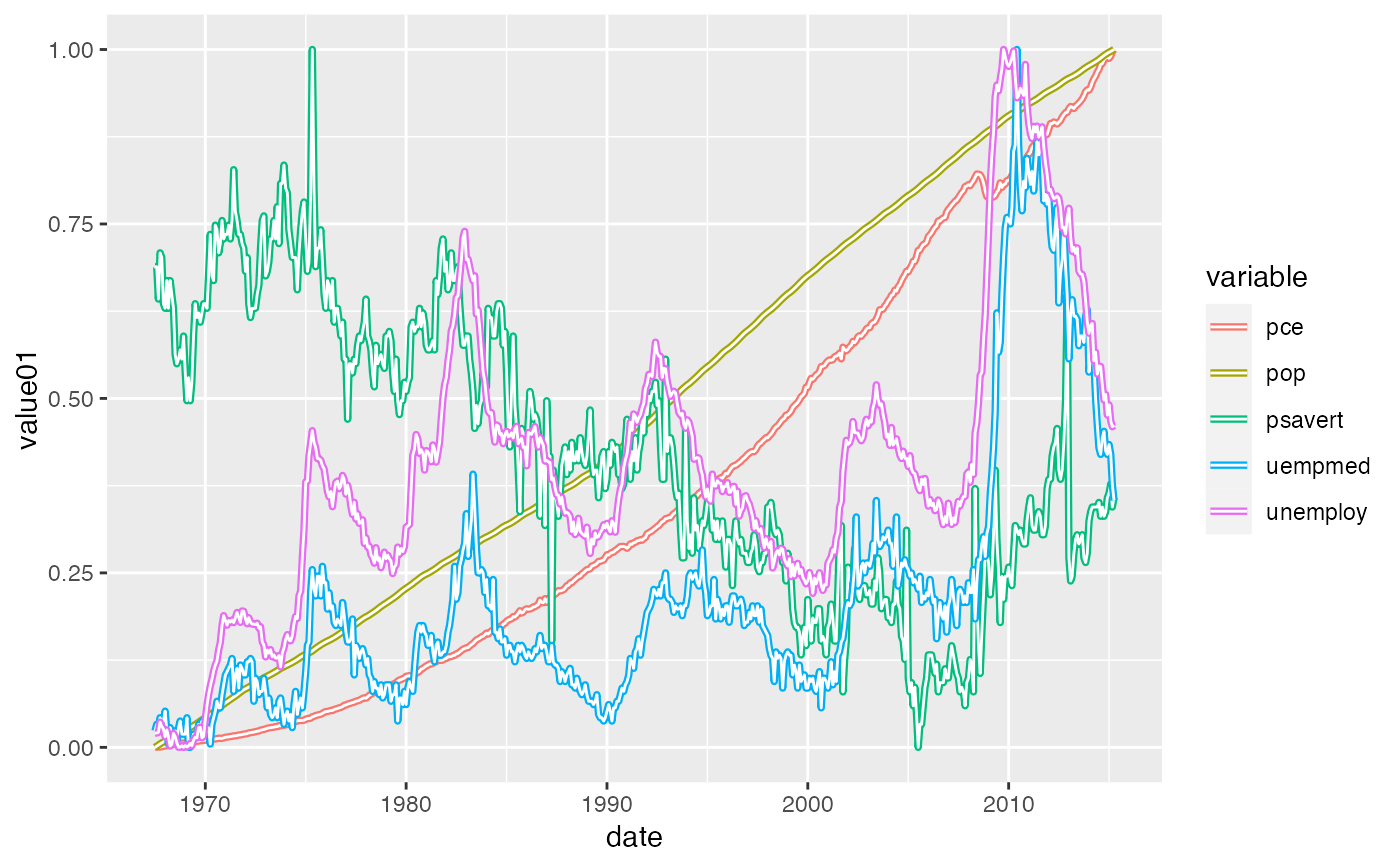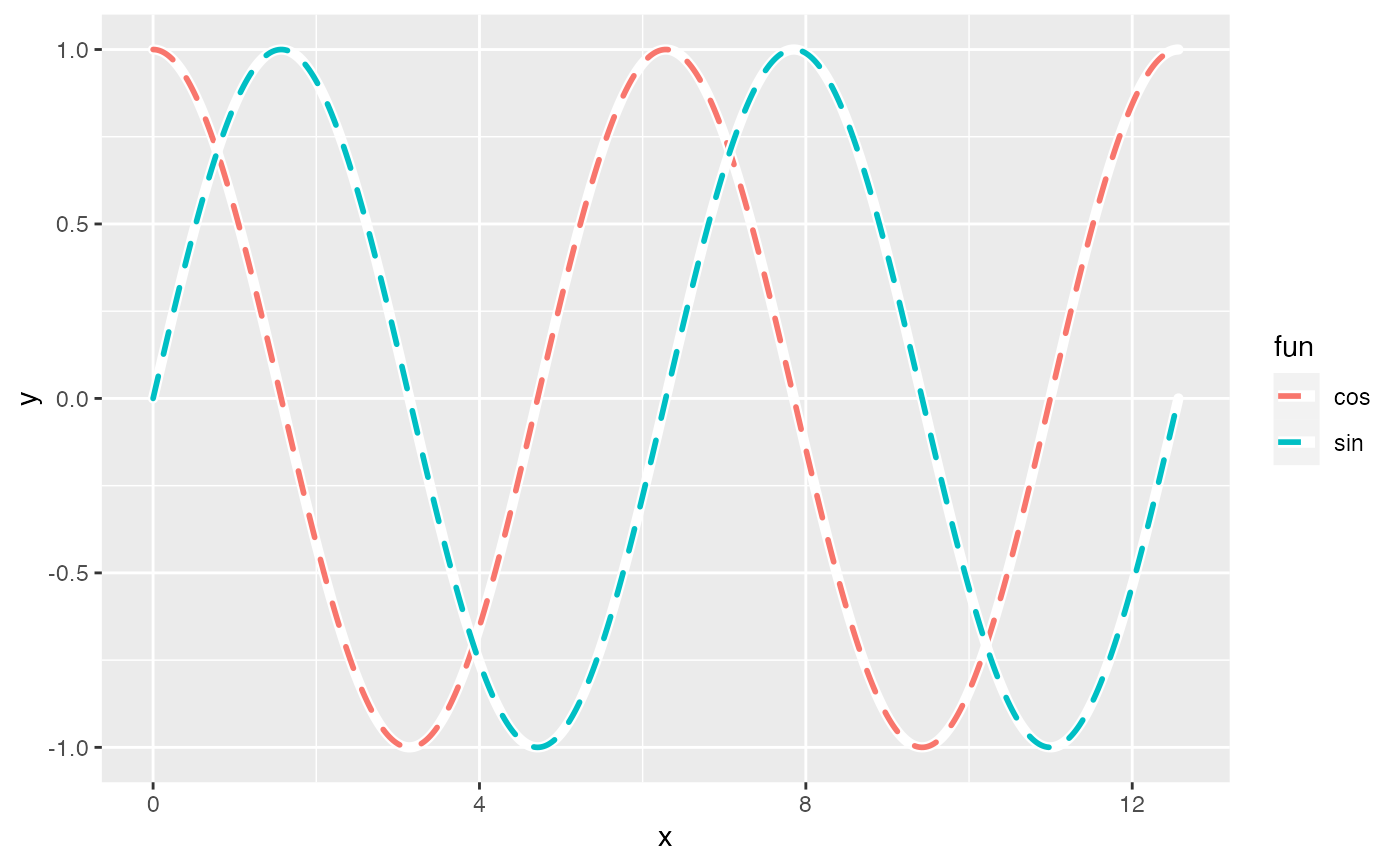This set of geoms is very similar to ggplot2::geom_path(),
ggplot2::geom_line() and ggplot2::geom_step(), with the only difference
being that they accept two additional aesthetics, bordercolour and
borderwidth. For additional documentation, please refer to the ggplot2
geoms.
Usage
geom_borderpath(
mapping = NULL,
data = NULL,
stat = "identity",
position = "identity",
...,
lineend = "butt",
linejoin = "round",
linemitre = 10,
arrow = NULL,
na.rm = FALSE,
show.legend = NA,
inherit.aes = TRUE
)
geom_borderline(
mapping = NULL,
data = NULL,
stat = "identity",
position = "identity",
...,
lineend = "butt",
linejoin = "round",
linemitre = 10,
arrow = NULL,
na.rm = FALSE,
show.legend = NA,
inherit.aes = TRUE
)
geom_borderstep(
mapping = NULL,
data = NULL,
stat = "identity",
position = "identity",
direction = "hv",
na.rm = FALSE,
show.legend = NA,
inherit.aes = TRUE,
...
)Arguments
- mapping
Set of aesthetic mappings created by
aes(). If specified andinherit.aes = TRUE(the default), it is combined with the default mapping at the top level of the plot. You must supplymappingif there is no plot mapping.- data
The data to be displayed in this layer. There are three options:
If
NULL, the default, the data is inherited from the plot data as specified in the call toggplot().A
data.frame, or other object, will override the plot data. All objects will be fortified to produce a data frame. Seefortify()for which variables will be created.A
functionwill be called with a single argument, the plot data. The return value must be adata.frame, and will be used as the layer data. Afunctioncan be created from aformula(e.g.~ head(.x, 10)).- stat
The statistical transformation to use on the data for this layer, either as a
ggprotoGeomsubclass or as a string naming the stat stripped of thestat_prefix (e.g."count"rather than"stat_count")- position
Position adjustment, either as a string naming the adjustment (e.g.
"jitter"to useposition_jitter), or the result of a call to a position adjustment function. Use the latter if you need to change the settings of the adjustment.- ...
Other arguments passed on to
layer(). These are often aesthetics, used to set an aesthetic to a fixed value, likecolour = "red"orsize = 3. They may also be parameters to the paired geom/stat.- lineend
Line end style (round, butt, square).
- linejoin
Line join style (round, mitre, bevel).
- linemitre
Line mitre limit (number greater than 1).
- arrow
Arrow specification, as created by
grid::arrow().- na.rm
If
FALSE, the default, missing values are removed with a warning. IfTRUE, missing values are silently removed.- show.legend
logical. Should this layer be included in the legends?
NA, the default, includes if any aesthetics are mapped.FALSEnever includes, andTRUEalways includes. It can also be a named logical vector to finely select the aesthetics to display.- inherit.aes
If
FALSE, overrides the default aesthetics, rather than combining with them. This is most useful for helper functions that define both data and aesthetics and shouldn't inherit behaviour from the default plot specification, e.g.borders().- direction
direction of stairs: 'vh' for vertical then horizontal, 'hv' for horizontal then vertical, or 'mid' for step half-way between adjacent x-values.
Examples
require(ggplot2)
#> Loading required package: ggplot2
# geom_borderline() adds a border around lines
ggplot(economics_long, aes(date, value01, colour = variable)) +
geom_borderline()
 # You can control the linewidth and colour of the border with the
# borderwidth and bordercolour aesthetics:
ggplot(economics_long, aes(date, value01, bordercolour = variable)) +
geom_borderline(borderwidth = .4, colour = "white")
# You can control the linewidth and colour of the border with the
# borderwidth and bordercolour aesthetics:
ggplot(economics_long, aes(date, value01, bordercolour = variable)) +
geom_borderline(borderwidth = .4, colour = "white")
 # The background 'border' part of the geom is always solid, however this
# can be used to create some nice effects:
x <- seq(0, 4 * pi, length.out = 500)
test_data <- data.frame(
x = rep(x, 2), y = c(sin(x), cos(x)),
fun = rep(c("sin", "cos"), each = 500)
)
ggplot(test_data, aes(x, y, colour = fun)) +
geom_borderline(linewidth = 1, linetype = "dashed", lineend = "round")
# The background 'border' part of the geom is always solid, however this
# can be used to create some nice effects:
x <- seq(0, 4 * pi, length.out = 500)
test_data <- data.frame(
x = rep(x, 2), y = c(sin(x), cos(x)),
fun = rep(c("sin", "cos"), each = 500)
)
ggplot(test_data, aes(x, y, colour = fun)) +
geom_borderline(linewidth = 1, linetype = "dashed", lineend = "round")

